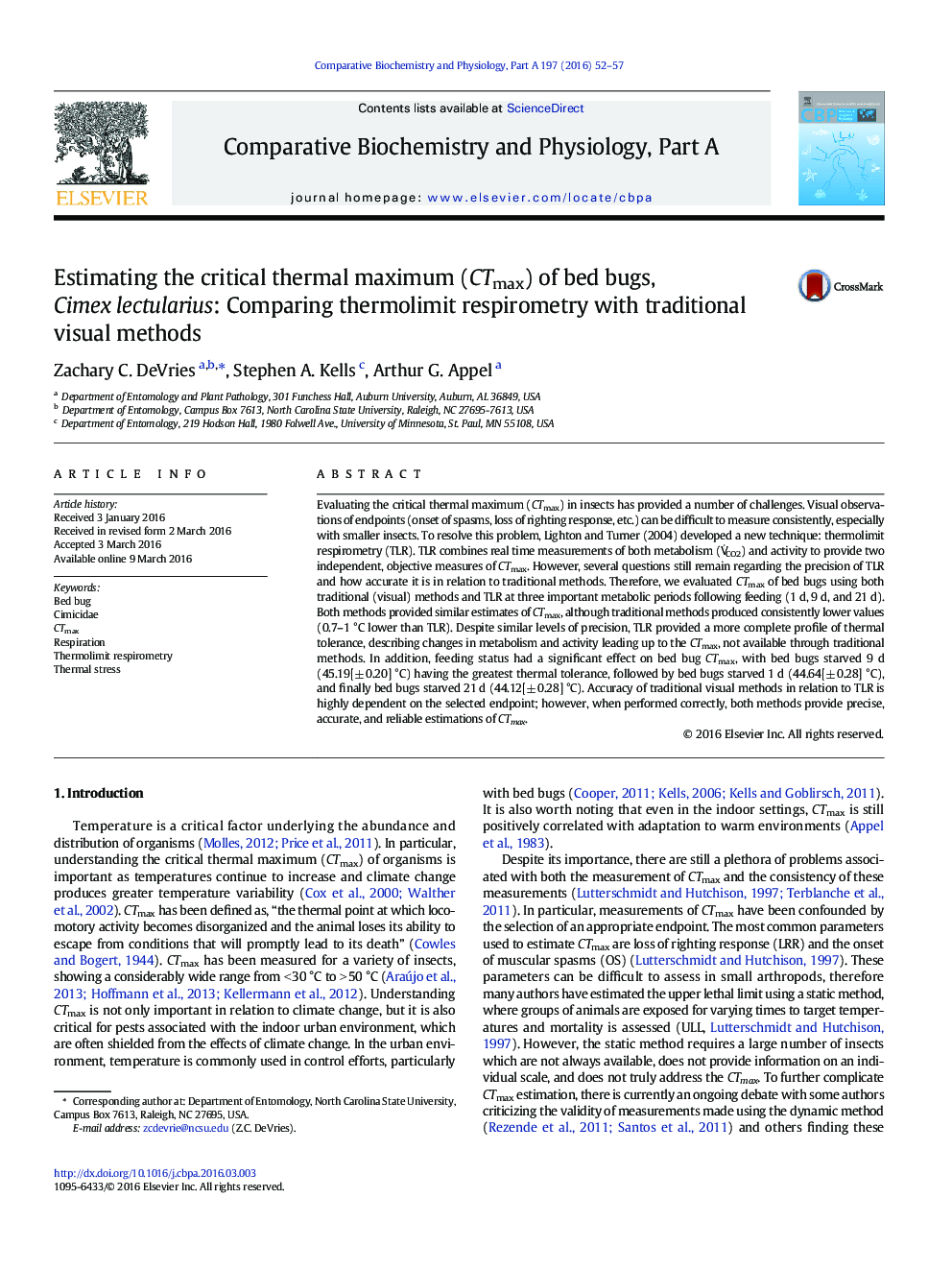| Article ID | Journal | Published Year | Pages | File Type |
|---|---|---|---|---|
| 1971880 | Comparative Biochemistry and Physiology Part A: Molecular & Integrative Physiology | 2016 | 6 Pages |
Evaluating the critical thermal maximum (CTmax) in insects has provided a number of challenges. Visual observations of endpoints (onset of spasms, loss of righting response, etc.) can be difficult to measure consistently, especially with smaller insects. To resolve this problem, Lighton and Turner (2004) developed a new technique: thermolimit respirometry (TLR). TLR combines real time measurements of both metabolism (V·CO2) and activity to provide two independent, objective measures of CTmax. However, several questions still remain regarding the precision of TLR and how accurate it is in relation to traditional methods. Therefore, we evaluated CTmax of bed bugs using both traditional (visual) methods and TLR at three important metabolic periods following feeding (1 d, 9 d, and 21 d). Both methods provided similar estimates of CTmax, although traditional methods produced consistently lower values (0.7–1 °C lower than TLR). Despite similar levels of precision, TLR provided a more complete profile of thermal tolerance, describing changes in metabolism and activity leading up to the CTmax, not available through traditional methods. In addition, feeding status had a significant effect on bed bug CTmax, with bed bugs starved 9 d (45.19[± 0.20] °C) having the greatest thermal tolerance, followed by bed bugs starved 1 d (44.64[± 0.28] °C), and finally bed bugs starved 21 d (44.12[± 0.28] °C). Accuracy of traditional visual methods in relation to TLR is highly dependent on the selected endpoint; however, when performed correctly, both methods provide precise, accurate, and reliable estimations of CTmax.
